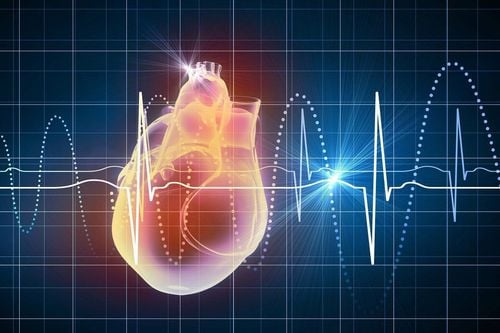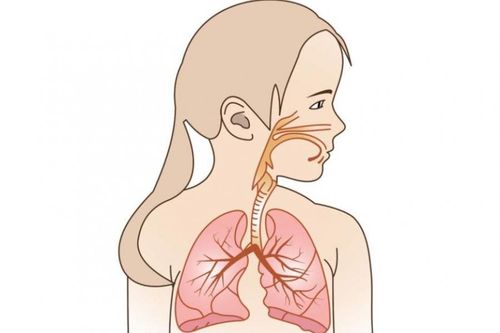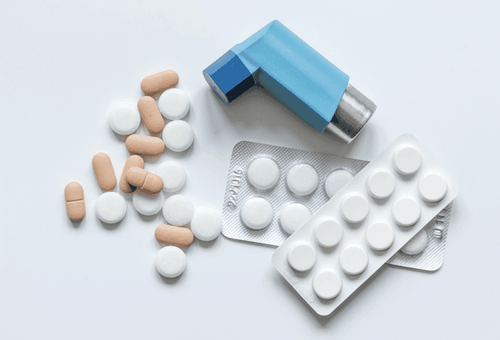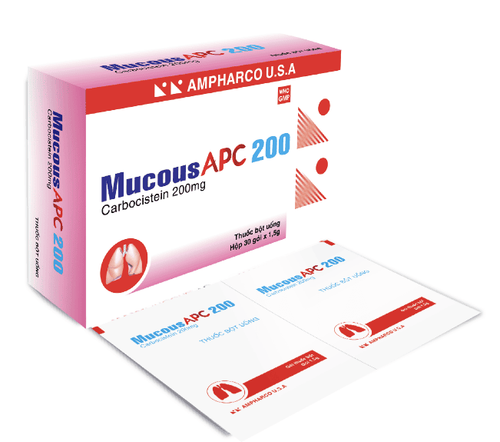This is an automatically translated article.
The article was written by MSc Ma Van Tham - Internal Medicine Doctor, Department of Pediatrics - Neonatology - Vinmec Phu Quoc International General Hospital.
The respiratory system includes: nose, pharynx, pharynx, larynx, trachea, bronchi, lungs, thorax and respiratory muscles. The respiratory center and nerve transmitters together play an important role in the respiratory system.
>> Review: Characteristics of children's respiratory system - Part 1
1. Physiological characteristics
1.1. Airway Air enters the lungs mainly through the nose, when breathing through the nose:
The respiratory muscles work strongly, the ribcage and lungs expand when breathing through the mouth. The air is warmed by blood vessels in the nasal mucosa and sinuses. The air is saturated by the nasal mucosa, which has many blood vessels and mucous glands. Air is filtered through the nasal mucosa before entering the lungs. Air from the nose to the lungs also depends on many factors such as: the diameter of the airways (air, bronchi...), the pressure between the lungs and the oral cavity, the amount of air per breath and the support of the muscles Respiratory. 1.2. Breathing Rate Immediately after birth the placental circulation stops working, along with the birth cry the baby begins to breathe through the lungs.
Newborns and young children in the first months: because the respiratory center is not yet complete, the breathing rhythm is easily disturbed, breathing can sometimes be fast, sometimes slow, sometimes shallow, sometimes deep.
Baby's breathing rate decreases with age: (According to A.F.Tur):
+ Newborn: 40 - 60 times/minute
+ 6 months: 35 - 40 times/minute
+ 12 months: 30 - 35 times/minute
+ 2 - 3 years old: 25 - 30 breaths/minute
+ 4 - 6 years old: 20 - 25 times/minute
+ 7 - 15 years old: 18 - 20 breaths/minute
The ratio between number of breaths and pulse also changes Change with age:
+ Newborn: 1/2, 5 - 3
+ 1 year old: 1/ 3.5 - 4
+ Adults: 1/4 - 5
This ratio does not change: when children exert themselves or emotional , which changes only in the presence of respiratory failure .
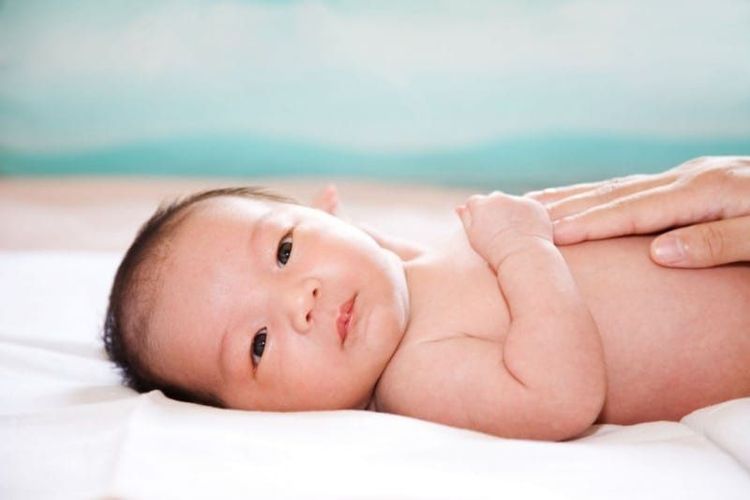
Cách đêm nhịp thở của trẻ sơ sinh
1.3. Breathing pattern Varies by age and gender
Newborns and breastfed babies: belly breathing (diaphragmatic breathing) Children 2 years old: mixed chest-belly breathing Children 10 years old: boys belly breathing, girls chest breathing 1.4. The process of gas exchange in the lungs * Gas exchange in the lungs of children is stronger than that of adults. Based on the amount of air inhaled /1 min/kg.
Children under 3 years old: 2 times more than adults Children 10 years old: 1.5 times more than adults * Amount of oxygen absorbed/1 minute/kg: 10ml in breastfed babies, 4ml in older children.
* Absorption of oxygen in cm3/1 hour/1kg: Depends on the age of the child.
Children 2 years old : 558 ml Children 6 years old : 552 ml Children 10 years old : 377 ml Children 14 years old : 313 ml From 20 to 30 years old: 277 ml * Respiratory quotient of infants: 0.70; in adults: 0.89.
To ensure a high oxygen demand, the child's respiratory system has a number of adaptive mechanisms such as: to compensate for shallow breathing, the child must breathe rapidly.
The exchange of O2 and CO2 between the alveoli and the blood is also made stronger thanks to the difference in pressure of O2 and CO2.
* The oxygen composition in the alveoli of the children's alveoli is higher than that of the adults:
Breastfed children: 17 - 17.16% Children under 15 years old: 15% * The CO2 composition in the alveoli of children is low than.
Breastfed children: 2.9% 15-year-olds: 4.85% * Alveolar partial pressures of O2 and CO2 change with age.
Breastfed children: 120 mmHg and 21 mmHg 15-year-olds: 110 mmHg and 38 mmHg This balance is also unstable, easily changing with changes in humidity, temperature, CO2 concentration...
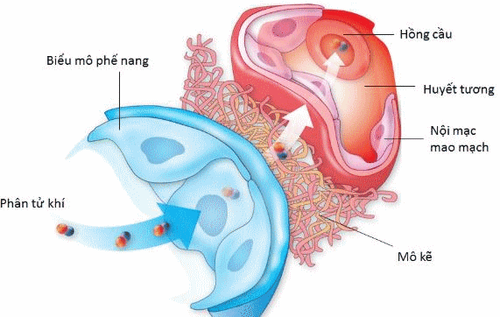
Quá trình trao đổi khí ở phổi giữa phế nang và tế bào máu
1.5. Respiratory regulation The respiratory movements are controlled by the respiratory center automatically and rhythmically.
The respiratory center is located in the medulla oblongata, under the control of the cerebral cortex. In infants and young children in the first months of life, the cerebral cortex and subcortical center are not fully developed, so the child is prone to breathing disturbances.
Beyond the control of the central nervous system. The respiratory system is also closely related to other organs such as cardiovascular, metabolic...
1.6. Self-protection mechanism of the respiratory tract Every day the body exchanges a volume from 6000 to 8000 liters. Normal breathing air, even if it is fresh, also contains many microorganisms, including disease-causing microorganisms. In the face of the risk of entering harmful or pathogenic agents, the respiratory system has an appropriate anatomical and physiological structure to protect itself.
Air filter: along the airway from the nose to the alveoli, there is a barrier system, filtering the air. At the nose the hairs grow in alternating directions. The nasopharyngeal mucosa is rich in blood vessels with constant mucus secretion. In the larynx, there is a rhythmic movement of opening and closing of the epiglottis according to the breathing cycle. Cough reflex: The cough reflex is very important to help the body expel foreign objects and mucus secretions from the airways. Mucosal barrier and villi: about 80% of the bronchial system squamous cells are columnar epithelial cells with pseudostratified villi. Each cell has about 250-270 vibrating hairs. The movement of these vibrating hairs is in a wave pattern with a frequency of 1000 times/min which is directed towards the pharynx. On the villi surfaces, there is a thin layer of fluid covered with a thickness of 5 to 10 μm made up of two layers: the outer layer is an emulsion that easily captures dust particles. All foreign bodies and mucus were ejected at 10 nm/min. The mucosal barrier prevented most micro-organisms larger than 5 μm from entering the alveoli. The phagocytic system: consists of epithelial cells located on the surface of the alveolar basement membrane, natural killer cells. Has the effect of capturing, inactivating or destroying microorganisms, foreign antigens entering the body. Immune barrier: After recognizing antigens, T lymphocytes will activate and differentiate B lymphocytes into plasma cells to produce specific antibodies. Antibody products are transported to the interstitial tissues, alveolar lumen to inactivate antigens. The secretions of the respiratory system: Surfactant, lysozyme... also play a very important role in fighting infections to protect the respiratory system.
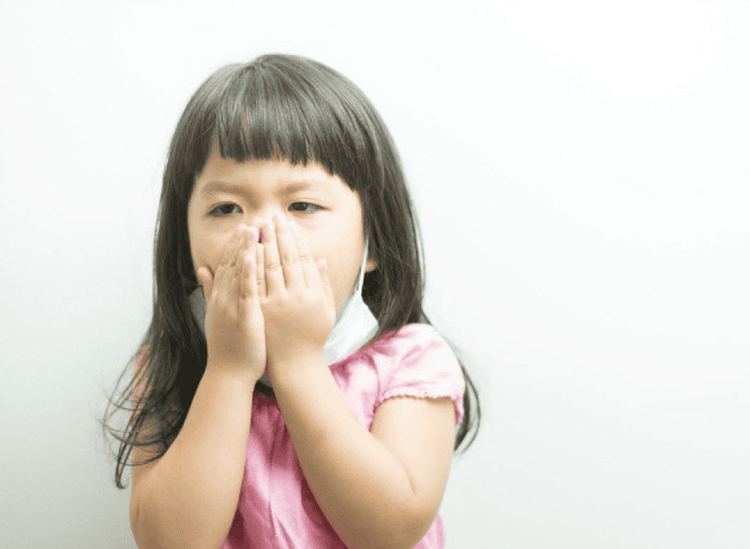
Phản xạ ho giúp tống dị vật và chất viêm nhầy ra khỏi đường hô hấp của trẻ
2. Conclusion
Children need high oxygen, but respiratory conditions are limited. Therefore, respiratory failure occurs rapidly.
Because the lung organization is not completely differentiated, it is easy to collapse and when there is damage to the lung, it is easy to cause pulmonary circulation disorders, disorders of the extra-respiratory process and the gas exchange process in the lungs.
Due to the anatomical and physiological structure of the respiratory organs, there are specific characteristics as above, so children are often susceptible to diseases of the respiratory organs and have a high rate.
Children need to provide enough elemental zinc/day for them to eat well, reach the correct height and weight and exceed the standard. Zinc plays a role in affecting most biological processes taking place in the body, especially the breakdown of nucleic acids, proteins... Organs in the body when zinc deficiency can lead to a There are a number of diseases such as neurological disorders, irritability, etc. Therefore, parents need to learn about the role of zinc and guide them to appropriate zinc supplements for their children.
In addition to zinc, parents also need to supplement their children with other important vitamins and minerals such as lysine, chromium, B vitamins,... errands.
Please regularly visit Vinmec.com website and update useful information to take care of your baby and family.





